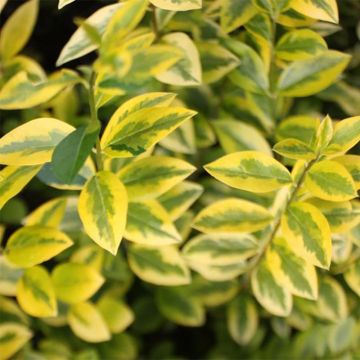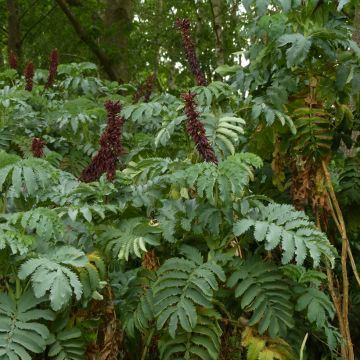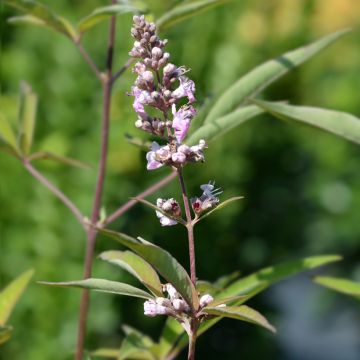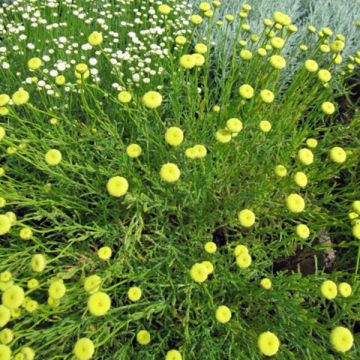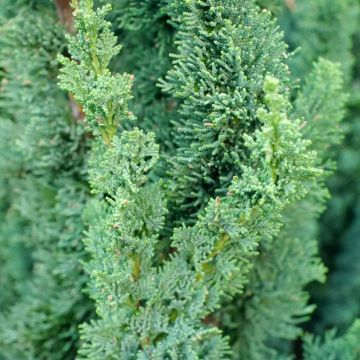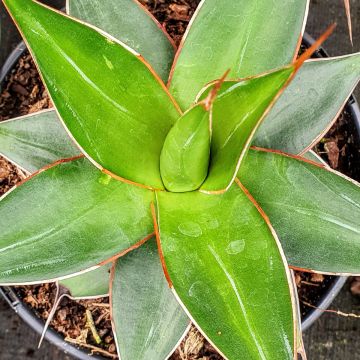

Polyspora ou Gordonia axillaris - Camélia de Taïwan
Polyspora axillaris
Polyspora axillaris
The Fried Egg Plant
This item cannot be shipped to the selected country
Delivery charge from €5.90
More information
Schedule delivery date,
and select date in basket
This plant carries a 24 months recovery warranty
More information
We guarantee the quality of our plants for a full growing cycle, and will replace at our expense any plant that fails to recover under normal climatic and planting conditions.
From €5.90 for pickup delivery and €6.90 for home delivery
Express home delivery from €8.90.
Does this plant fit my garden?
Set up your Plantfit profile →
Description
Polyspora or Gordonia axillaris is a shrub or small evergreen tree related to camellia that will delight enthusiasts of rare and precious plants. This botanical species, offers a picturesque habit, with decorative bark, elegant evergreen foliage and late and extended summer flowering. Its large incurved white corollas adorned with a big display of saffron yellow stamens exhale a sweet fragrance that attracts butterflies. The shrub is attractive all year round, even outside its flowering period. Sensitive to cold, it can only be acclimatised in open ground in the most sheltered gardens of the mildest regions of our country. Elsewhere, it will be placed in a large pot to be stored in a frost-free place.
Polyspora axillaris is a botanical species from the family of tea plants, Theaceae, native to southern China, Vietnam and Taiwan. In the wild, it forms a small tree that can exceed 7 metres (23 feet) in height, but will remain more modest in our climates, especially if grown in a container. The hardiness of a mature plant is around -5°C (23°F) at its lowest point.
This slow-growing shrub develops one or more short main stems that become twisted and nodular with age. Its bark, of orange-brown colour, peels off in irregular patches, revealing a brand new beige "skin". The crown of this shrub is more or less wide, always dense and branched. In open ground, it reaches an average height of 2.50 metres (8 feet) with a spread of 1.50 metres (5 feet) at the age of 10 years. Its evergreen foliage is particularly decorative: it consists of long, slightly incurved, ovate to lanceolate, coriaceous leaves with a prominent central vein, measuring about 15 cm (6in) long. Their colour is fairly dark glossy green with a central vein and a lighter edge. The leaves that reach the end of their life turn beautifully red before falling, quickly replaced by new leaves. Flowering generally starts in August, earlier or later depending on the climate, and lasts until October. The large rounded flower buds resemble those of camellias. They open into corollas measuring 7 to 10 cm (3 to 4in) in diameter composed of 6 crumpled white petals, almost translucent, surrounding a large heart of yellow stamens. They are fragrant, nectar-bearing, and attractive to bees. When they fall to the ground, with the stamens pointing towards the sky, the flowers somewhat resemble fried eggs, creating an unusual carpet.
Polyspora axillaris is a particularly ornamental small tree that thrives in sunny coastal gardens or urban gardens in mild regions. It should be placed in a prominent position, such as on a carpet of small periwinkles, moss phlox, heather or silver-leaved creeping plants, which will enhance its bark. If your climate does not allow for cultivation in open ground, you can grow it in a large pot: it can spend the summer outdoors, in the sun, and can be brought indoors in autumn to a bright and minimally heated greenhouse or conservatory. It is a plant that prefers acidic to neutral, well-drained soil that remains moist in summer.
Report an error about the product description
Polyspora axillaris in pictures
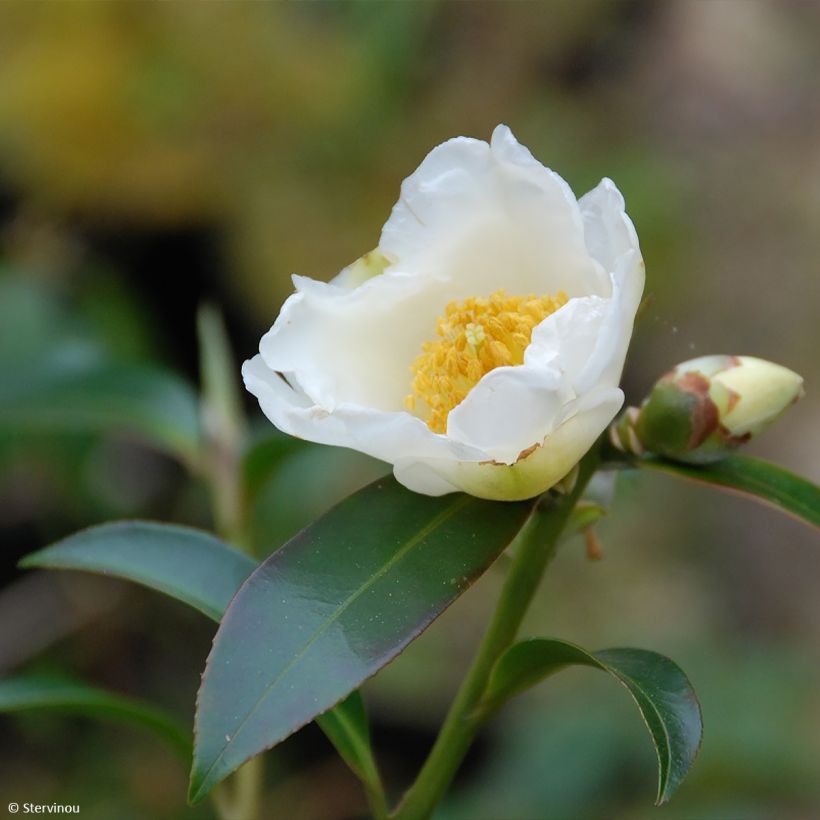

Plant habit
Flowering
Foliage
Botanical data
Polyspora
axillaris
Theaceae
The Fried Egg Plant
China
Other Shrubs A to Z
Planting and care
Polyspora or Gordonia axillaris is grown in open ground only in our mildest climates in winter, as it does not tolerate temperatures below 5°C (41°F). Planting in spring is preferable. If your climate does not allow for open ground cultivation, you can grow it in a large pot: it can spend the summer outdoors and can be brought indoors in autumn to a bright and minimally heated greenhouse or conservatory, like an orange tree.
This is a plant that prefers neutral to acidic, well-drained soil, rich in humus, and to be kept cool in summer: water regularly to help the plant establish itself, as well as during dry periods (with non-calcareous water). Mulch the soil to retain moisture and feed the plant. A mix of ericaceous soil, leaf compost, and sand will be suitable. Provide compost or organic fertilizer in late winter or early spring. Choose a sunny location that is not too hot, with partial shade, and well-sheltered from the wind. It requires a minimum of 6 hours of sunlight per day, avoiding afternoon sun.
This plant can be susceptible to rot, leaf spots, and viruses. It can be attacked by aphids and scale insects that cause sooty mold, as well as by weevils.
Planting period
Intended location
Care
This item has not been reviewed yet - be the first to leave a review about it.
Evergreen shrubs
Haven't found what you were looking for?
Hardiness is the lowest winter temperature a plant can endure without suffering serious damage or even dying. However, hardiness is affected by location (a sheltered area, such as a patio), protection (winter cover) and soil type (hardiness is improved by well-drained soil).

Photo Sharing Terms & Conditions
In order to encourage gardeners to interact and share their experiences, Promesse de fleurs offers various media enabling content to be uploaded onto its Site - in particular via the ‘Photo sharing’ module.
The User agrees to refrain from:
- Posting any content that is illegal, prejudicial, insulting, racist, inciteful to hatred, revisionist, contrary to public decency, that infringes on privacy or on the privacy rights of third parties, in particular the publicity rights of persons and goods, intellectual property rights, or the right to privacy.
- Submitting content on behalf of a third party;
- Impersonate the identity of a third party and/or publish any personal information about a third party;
In general, the User undertakes to refrain from any unethical behaviour.
All Content (in particular text, comments, files, images, photos, videos, creative works, etc.), which may be subject to property or intellectual property rights, image or other private rights, shall remain the property of the User, subject to the limited rights granted by the terms of the licence granted by Promesse de fleurs as stated below. Users are at liberty to publish or not to publish such Content on the Site, notably via the ‘Photo Sharing’ facility, and accept that this Content shall be made public and freely accessible, notably on the Internet.
Users further acknowledge, undertake to have ,and guarantee that they hold all necessary rights and permissions to publish such material on the Site, in particular with regard to the legislation in force pertaining to any privacy, property, intellectual property, image, or contractual rights, or rights of any other nature. By publishing such Content on the Site, Users acknowledge accepting full liability as publishers of the Content within the meaning of the law, and grant Promesse de fleurs, free of charge, an inclusive, worldwide licence for the said Content for the entire duration of its publication, including all reproduction, representation, up/downloading, displaying, performing, transmission, and storage rights.
Users also grant permission for their name to be linked to the Content and accept that this link may not always be made available.
By engaging in posting material, Users consent to their Content becoming automatically accessible on the Internet, in particular on other sites and/or blogs and/or web pages of the Promesse de fleurs site, including in particular social pages and the Promesse de fleurs catalogue.
Users may secure the removal of entrusted content free of charge by issuing a simple request via our contact form.
The flowering period indicated on our website applies to countries and regions located in USDA zone 8 (France, the United Kingdom, Ireland, the Netherlands, etc.)
It will vary according to where you live:
- In zones 9 to 10 (Italy, Spain, Greece, etc.), flowering will occur about 2 to 4 weeks earlier.
- In zones 6 to 7 (Germany, Poland, Slovenia, and lower mountainous regions), flowering will be delayed by 2 to 3 weeks.
- In zone 5 (Central Europe, Scandinavia), blooming will be delayed by 3 to 5 weeks.
In temperate climates, pruning of spring-flowering shrubs (forsythia, spireas, etc.) should be done just after flowering.
Pruning of summer-flowering shrubs (Indian Lilac, Perovskia, etc.) can be done in winter or spring.
In cold regions as well as with frost-sensitive plants, avoid pruning too early when severe frosts may still occur.
The planting period indicated on our website applies to countries and regions located in USDA zone 8 (France, United Kingdom, Ireland, Netherlands).
It will vary according to where you live:
- In Mediterranean zones (Marseille, Madrid, Milan, etc.), autumn and winter are the best planting periods.
- In continental zones (Strasbourg, Munich, Vienna, etc.), delay planting by 2 to 3 weeks in spring and bring it forward by 2 to 4 weeks in autumn.
- In mountainous regions (the Alps, Pyrenees, Carpathians, etc.), it is best to plant in late spring (May-June) or late summer (August-September).
The harvesting period indicated on our website applies to countries and regions in USDA zone 8 (France, England, Ireland, the Netherlands).
In colder areas (Scandinavia, Poland, Austria...) fruit and vegetable harvests are likely to be delayed by 3-4 weeks.
In warmer areas (Italy, Spain, Greece, etc.), harvesting will probably take place earlier, depending on weather conditions.
The sowing periods indicated on our website apply to countries and regions within USDA Zone 8 (France, UK, Ireland, Netherlands).
In colder areas (Scandinavia, Poland, Austria...), delay any outdoor sowing by 3-4 weeks, or sow under glass.
In warmer climes (Italy, Spain, Greece, etc.), bring outdoor sowing forward by a few weeks.



































